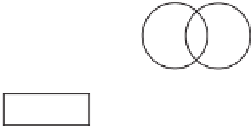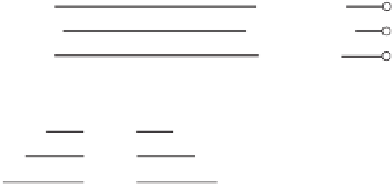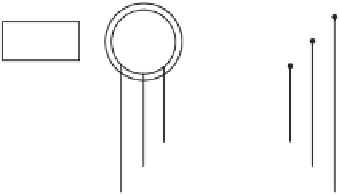Environmental Engineering Reference
In-Depth Information
configuration offers high reliability, lowmaintenance, and possibly low cost for certain turbines
(Mathew and Philip 2011).
1.4.3 Generators and Topologies
A generator is an electric machine that converts mechanical energy to electrical energy. It forces
electric charge to flow through an external electrical circuit. For wind power applications,
fixed-speed wind turbines were mostly operated with a squirrel-cage induction generator
(SCIG) and a multiple-stage gearbox during the 1980s and 1990s. Since the late 1990s, most
wind turbines, in which the power level was increased to 1.5 MW and above, have adopted
variable-speed operation because of the grid requirement for power quality. For these variable-
speed applications, doubly-fed induction generators (DFIG) are commonly used together
with a multi-stage gearbox and power electronic converters. Permanent magnet synchronous
generators (PMSG) are becoming increasingly popular because of their ability to reduce
failures in the gearbox and lower maintenance problems (Spera 2009). The common topologies
adopting these generators for wind power applications (Baroudi
et al
. 2005; Blaabjerg
et al
.
2006) are shown in Figure 1.43.
Grid
Gearbox
SCIG
Transformer
Capacitor
(a) SCIG-based topology
Grid
Gearbox
DFIG
Transformer
AC-DC-AC
Converter
(b) DFIG-based topology
Grid
PMSG
AC-DC-AC
Converter
(c) PMSG-based topology
Transformer
Figure 1.43
Typical topologies for wind power systems


















Search WWH ::

Custom Search